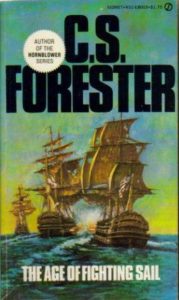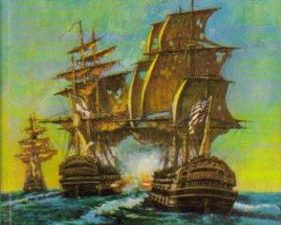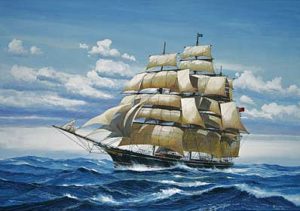As a kid, I was fascinated by sailboats and sailing ships. I loved reading adventure novels such as C.S. Forester‘s classic Horatio Hornblower series. I also enjoyed building models. So, one birthday (or Christmas), my parents gave me a model sailing ship. The model was never built. I could never muster the enthusiasm to spend the hours working on the rigging, sails, masts, etc. to complete it. In retrospect, my reaction may have been my first practical lesson in visual storytelling.
One of the first lessons novelists (and screenwriters) learn is that conflict drives story. Conflict forces characters to act; they are forced to resolve the conflict by making a decision. A story where characters do not have to make choices isn’t very engaging. Readers (and audiences) invest in characters based on the choices they make and how they react to these choices. The various pivot points in those decisions determine the plot.
So, how does this apply to my model sailing ship?
As a young boy I was drawn to the action and adventure of characters like Horatio Hornblower because they were forced to make life altering choices. The stakes were high, could even invite death if they made the wrong one. Forester brought me into their world and experience their choices through my imagination. My model sailing ship didn’t invoke the same stakes or consequences.
This, of course begs the question: how does a model ship tell a story? Of course, the model itself doesn’t; it’s a replica of a actual inanimate object. But each ship has a story. And the story of the ship my parents bought me as a gift was…boring.
The model my parents bought was of the Cutty Sark, a very famous “tea clipper.” It was also one of the last. Built in 1869, the Cutty Sark clocked the fastest times of any sailing ship between England and India. The image on the right is similar to the painting on the cover of the model. (My model was sold by Revell, one of the best-known manufacturers of scale models. I built dozens of their models.) The ship is elegant and majestic. The image depicts the historical significance of the ship as fast, lean, and efficient as it cuts through the water. But for me, as a pre-teen, this wasn’t very interesting. In fact, it’s boring. Where’s the adventure? Where’s the conflict? What are the consequences of failure? The image doesn’t convey any threats or conflict. The ship does it’s job very well. Of course, this made the ship historically famous and notable. But the story of the ship, as depicted in the painting, is routine with very low stakes and little, if any, conflict.

Now let’s take a look at a ship from the cover of one of Forester’s classic books. The image on the left of a nonfiction book titled The Age of Fighting Sail is completely different. Two massive fighting ships–ships of the line–are engaged in a battle to the death. Cannon are firing, smoke is billowing up between them. The sails are battered from the battle. This image visually told me a story of daring, survival, death, and courage. Sailors and officers are making decisions, even if I can’t see them, that could determine whether they live or die, or whether their ship will sink or fight on another day. We know (and mentally process) the deaths of these men and their wounds because we know the cannon balls had to land somewhere and the sails and rigging are tattered. This image thrusts conflict at the potential reader.
So, as a young boy (or even an adult reader), which of these ship’s is likely to captivate my attention? Which world would I want to recreate in building my model? If we are engineers, the Cutty Sark has its advantages. As an action adventure story, I’ll take the ships-of-the-line in The Age of Fighting Sail. Indeed, as I look back on my modeling activity, I found my interest in the story behind the object as important in motivating me to finish the model as the story in a book that keeps me engaged to its conclusion today as an adult.

